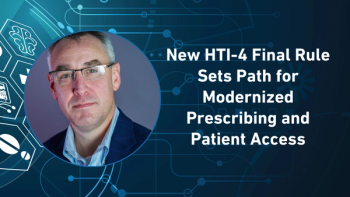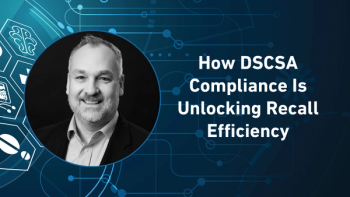
- Pharmaceutical Commerce - March 2020
- Volume 15
- Issue 1
A Conversation with Mark Hansan, CareMetx
CareMetx was founded in 2011 by two longtime industry executives, Bob Dresing and Mark Hansan, who started in the patient support field in the 1980s. Dresing is now chairman; Hansan is CEO. In 2018, it acquired VirMedica, a leading e-services company in the Hub industry, and BioSolutia, an award-winning Hub company in Lake Mary, FL. Today it has five offices and operates as a national patient access company offering turn-key solutions, proprietary e-services and collaborative patient support programs. Most recently, it launched a new business unit, OutcomeRx, designed to provide holistic solutions for new personalized medicines, such as cellular and genetic therapies, that require innovative value-based contracting between manufacturers and payers.
Pharmaceutical Commerce sat down with Hansan; here’s what he had to say about the evolving hub services/patient support arena.
1. What is the CareMetx origin story? How did you come to concentrate on this part of the healthcare ecosystem?
I was very fortunate to start my career at the Cystic Fibrosis Foundation, just after Bob Dresing became the president and CEO. Bob had a son with CF and he focused the organization on raising money to cure the disease. Over the next 10 years we achieved some remarkable accomplishments including establishing a research framework leading to the discovery of the CF gene in 1989, funding early stage biotech companies for drug development and gene therapy and creating the first disease-specific specialty pharmacy in 1988.
While operating the pharmacy, we saw first-hand the challenges patients and their families faced in accessing the drugs they needed. This was a time of pre-existing conditions, lifetime caps and HMOs and as a result the uninsured rate for CF patients exceeded 15%. This led Bob to push the Pharmaceutical Manufacturers Association (then PMA; now PhRMA) to encourage all member companies to offer patient assistance programs. PMA even dedicated their first PAP guide to Bob for his leadership.
While we worked aggressively to ensure every patient had insurance whether private or government and got the uninsured rate to below 2%, we also witnessed the affordability challenges that all rare disease patients faced. I was inspired and motivated to do something about this issue. When you know the patients and their families, you have a clear view of what they go through just to stay healthy. Why create even more stress in their lives by placing obstacles that create access challenges?
Our response at that time led us to found TheraCom, one of the original Hub providers, in 1996. That company was acquired in the early 2000s, and we subsequently founded CareMetx (after trying to buy TheraCom back) in 2011.
CareMetx is based on two core beliefs — first, the traditional Hub business lacked the technology necessary to improve automation that could reduce the manual processes, and second, there would be an increasing need for payers and manufacturers to move towards more value-based contracts. The initial tagline — “From Intake to Outcomes”—reflects our commitment to our beliefs about the Hub industry.
2. What is CareMetx’ stance in the market in terms of services and capabilities? What are the company’s competitive advantages?
In my opinion, this industry is experiencing a shift from the analog or traditional Hub to a digital-hybrid Hub model. The stakeholders involved in our industry – and healthcare generally – are becoming more digital and reliant on data to make decisions. Partnerships are expanding providing the industry with access to better data capture methodologies and analytics. Tools like APIs are more pervasive and make it easier than ever to access the latest digital transactions. Even patients themselves are cutting the cord and going only mobile. These trends are transforming the Hub business model away from the legacy processes to a more nimble, customized, digital experience for patients, providers and even payers.
To answer the second part of your question about CareMetx, we are comfortable with our market position as a collaborative disruptor. We have all the traditional solutions of a modern Hub, but we have unbundled our proprietary capabilities and provide them to other Hubs, including internal manufacturer Hubs and even our Hub competitors. We have been in the business long enough to know the decision to move a Hub, especially some of the larger ones, is fraught with difficulties and even risk.
We want to minimize these potential issues by allowing others to connect to our tools. Don’t get me wrong, we would love to take over the entire Hub, but in some instances, the best way we can provide immediate value is to leverage our plug-in technologies and e-service transactions.
For the Hub programs we operate, we are proud to support some of the most innovative therapies on the market. We are comfortable with everything from the Hub-lite models to ultra-rare, high-touch Hub programs. Our roots as patient advocates have never left us.
3. What do you mean by “digital-hybrid Hub”? Can you explain more about that?
Sure. There are three aspects of a digital-hybrid Hub: a front-end digital experience; a pathway for manual intervention; and the high-touch services themselves. All of these assets, correctly assembled, create a value proposition in which providers enjoy a more seamless and responsive process, patients start therapy with fewer obstacles, and the manufacturer-sponsor can bring more services to their stakeholders at a lower fee structure than legacy Hub services alone.
A prime example is a pilot program where we are collaborating with a major specialty brand to place our e-service transactions directly into the providers’ EMR system, allowing them to complete an electronic benefit investigation while performing their daily tasks in their EMR. The digital assets support the front-end of the patient onboarding process where tasks such as consent/enrollment, benefit verifications, prior authorizations, and copay support can be performed wholly or partially by our e-service transactions. This not only improves the rate at which these tasks are completed and speeds the patient towards therapy, but it also creates a digital data stream that can improve all aspects of the operation.
When something in the digital process hits an obstacle, whether with an electronic benefit investigations or electronic prior authorization, the partial data from that transaction is captured and automatically sent to an integrated “off-ramp” where a team completes the transaction manually. Once completed, the full result is delivered in a digital format back to the requestor (for example, a provider). The end result enables a closed-loop digital experience for the provider. There is real value in the provider never having to leave their native workflow to reach out to a Hub for service. It’s efficient, cost-effective, and reduces the providers’ workload while moving the patient forward toward therapy.
4. In recent years, CareMetx has made a significant commitment to its IT platform. These days, many hub service providers are touting their platform, which leads to two questions: a) are the various platforms essential to the success of a patient services program? b) are there meaningful differences among the platforms?
This is another area we are disrupting because we think of ourselves as a platform company with technology for the entire process needed to support a patient from the beginning of treatment through achieving the desired outcomes. All parties are seeking a more nimble, digital, self-service model. Stakeholders interface with the platform through different user interfaces (UIs). These could be the EMR, apps, portals, partner software, laptops or maybe a mobile phone. The UI layer—wherever it resides—is now the front door for Hub interactions. Underneath the UI layer, you must have the right technology, tool or platform for whatever the stakeholder is trying to achieve. As an example, you don’t need a big CRM platform to return an electronic benefit verification.
As to meaningful differences among Hub platforms, I would say at this point, there are a lot of strong options available. I believe the CRM system is important for the success of a Hub program, but more so from a flexibility, database, compliance and privacy perspective. We have a proprietary CRM platform called CareMetx Connect supporting all of our traditional Hub programs. But many of our e-service apps are deployed on our clients’ and even some of our competitors’ Salesforce platforms. For CareMetx, we have partnerships for clients that are building their own Salesforce environment. Again, we look at our technology platform through a wide aperture to ensure the right combination of technology and services to produce an optimal result for providers and patients.
5. You have mentioned insource, outsource, hybrid, hub-lite and traditional Hubs. What’s your position on how best a pharma company should structure its programs?
This question has been asked for the last two decades and the answer remains the same—it depends. What I mean is the manufacturer needs to first decide whether they want to take on the responsibility for an internal Hub. There is no doubt we are seeing many major manufacturers invest in an internal Hub with the goal of owning their data and system infrastructure. In doing so, they are able to better define workflows, specify which technologies add value for their brands and improve access to program data and performance metrics.
However, internal Hubs also face a range of competing priorities within a manufacturer and as a result, compliance may be challenging. In fact, executives from one manufacturer were just convicted in part because their internal Hub fell out of compliance.
Structuring a Hub program begins with the product driving the program strategy and understanding the dynamics of the disease including the patient and their providers. We believe the digital-hybrid model with its combination of e-services and complementary manual support systems holds the most promise and value in today’s marketplace.
There is no longer a one-size-fits-all solution. Manu-facturers want significant input and more control over how their brands are accessed and consumed. That’s why our technologies have been designed to support a variety of use cases. For example, we have developed a family of “bolt on” apps around our most common e-services transactions that enable the trans-action to be quickly activated with-in a manufacturers own CRM Sales-force environment. These apps deliver a turn-key product in that the workflows, user interface, and connectivity are already enabled in the solution.
6. What’s your take on the current level of per-formance of pharma com-panies in running their patient-support programs? What could the industry be doing better?
Many manufacturers do an outstanding job running their patient-support programs. I think this is due in part to executives realizing the importance of understanding the challenges the patient is facing. Also, manufacturers know access and affordability can be a brand advantage or disadvantage but patients are sophisticated and know whether there is a genuine commitment by the manufacturer. I believe this is why we are even starting to see C-suite level roles focused on the patient.
In terms of what they can be doing better, well, I think we all can do more to eliminate the access and affordability barriers which still exist. Hubs remain viable because considerable process friction remains in healthcare related to access and delivery of specialty medicines. Isn’t it time to solve some of the foundational problems? For example, CareMetx has been working for the past few years to advance a collaborative agenda that brings together manufacturers and payers to find common ground to ensure no patient waits for a life-saving treatment due to ineffective business practices or lack of information.
Specifically, we believe the increasing number of cell and gene therapies will accelerate the need for these new approaches. Is it realistic for a patient to have a copay when a one-time cell or gene therapy can cost millions of dollars? The industry is challenged to create a new model that is focused on meeting stakeholder needs. We are embracing this challenge. In 2019, we launched OutcomeRx, which is an entirely new business infrastructure that contemplates 360-degree solutions for manufacturers and payers. We’ve been pleased with the response from manufacturers and payers. The key to these efforts is a focus on payer collaboration in the form of innovative financial contracts that change how drugs are paid for by tying payments to predetermined clinical outcomes and long-term patient results.
7. So as you look ahead to the next decade, how do you see Hub services evolving?
Well, over 20 years ago we used to be called “hotline providers.” I doubt in 10 years, we will be using the term “Hub” to describe what we do. The name emerged due to the access challenges and the need to navigate issues and solve problems among stakeholders.
As access challenges are managed more effectively with technology, I believe the next focal point will be to ensure the patient achieves the results expected from the treatment. Frankly, outcomes matter more than ever. Manufacturers and payers will be working together to ensure the patient gets the appropriate treatment which achieves the desired results. And our industry will be right in the middle, helping all parties work in the patients’ best interests to get them healthy again. On second thought, maybe Hub is the right name, but in the next decade, we will play an expanded role and the name will have a different meaning.
Articles in this issue
over 5 years ago
Hub providers can be the source of the best real-world evidenceover 5 years ago
2020 Patient Support Vendor Directoryover 5 years ago
2020 Patient Support / Hub Services Reportover 5 years ago
Real-world evidence gets closer to everyday treatment decisionsalmost 6 years ago
HDA board passes leadership to AAM’s Chip DavisNewsletter
Stay ahead in the life sciences industry with Pharmaceutical Commerce, the latest news, trends, and strategies in drug distribution, commercialization, and market access.





